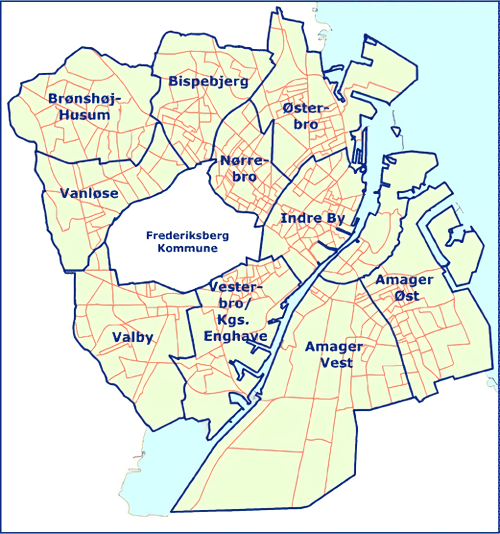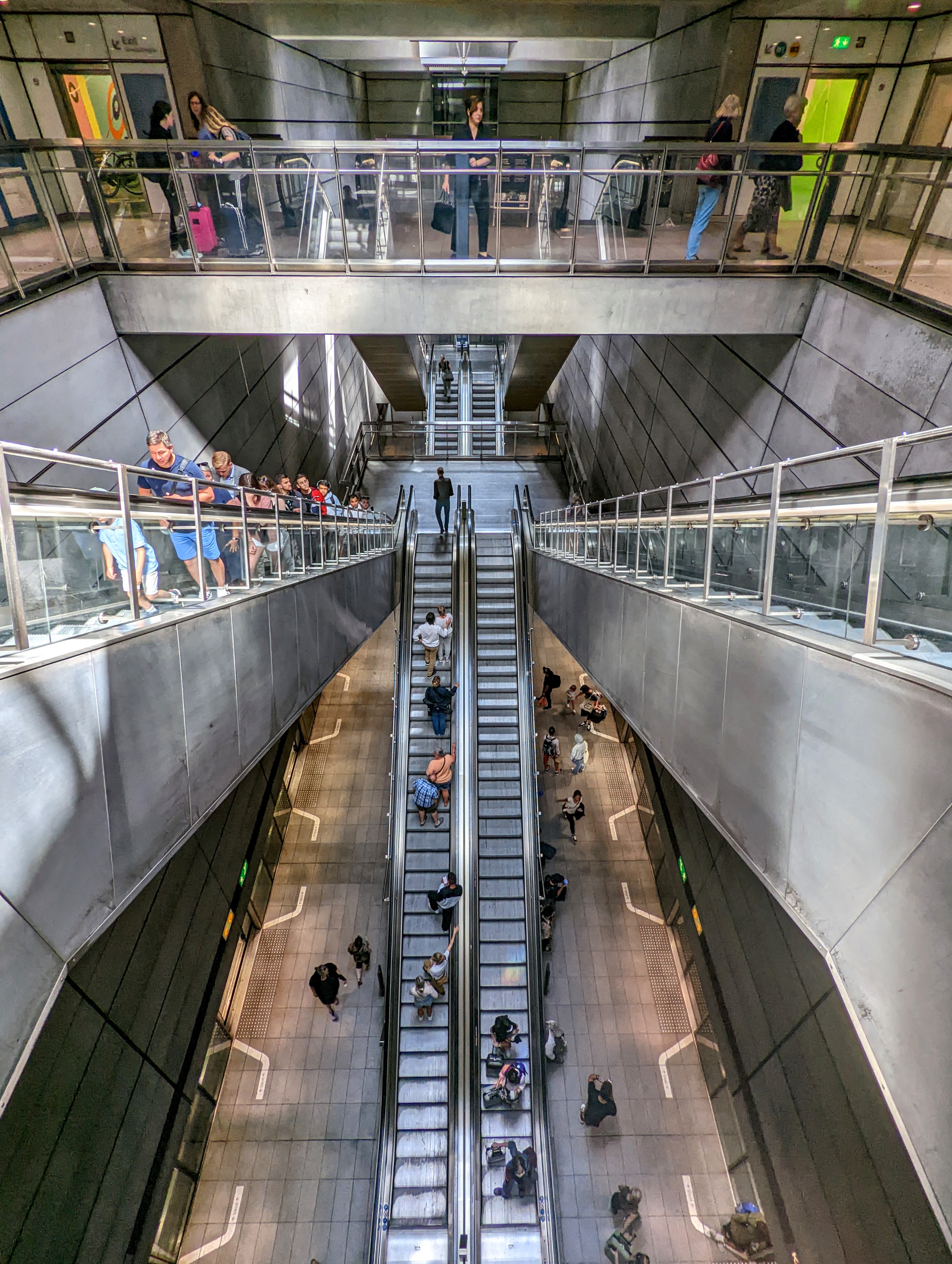|
Grønnegade
Grønnegade ( lit.: Green Street) is a street in the Old Town of Copenhagen, Denmark, running northeast from Gammel Mønt to Gothersgade where it turns into Borgergade. It is part of Copenhagen's most exclusive shopping area, located northwest of Kongens Nytorv Kongens Nytorv (literal translation, lit. "The King's New Square") is a town square, public square in Copenhagen, Denmark, centrally located at the end of the Pedestrian zone, pedestrian street Strøget. The largest square of the city, it was l .... History The street name Grønnegade, then as ''Grønægade'', is already registered in 1377, making it one of the oldest street names in Copenhagen which still exist today. In the Middle Ages, it was a grassy path that passed through an area with private gardens and undeveloped sites. From at least 1689, a closed passageway, later referred to as Smids Gang, extended from the north side of the street. Another narrow alleyway, Peder Madsens Gang, connected Grønnegade to Øs ... [...More Info...] [...Related Items...] OR: [Wikipedia] [Google] [Baidu] |
Gammel Mønt
Gammel Mønt () is a street in central Copenhagen, Denmark, located one block west of Gothersgade and Rosenborg Castle Garden. History In 1497, a community of Poor Clare nuns established the Monastery of St. Clare roughly at the junction of present-day Gammel Mønt and Møntergade. In 1541, after the Reformation, it came into use as the Royal Mint. From 1575 to 1593 it was used as a church by a German congregation but then again as a mint until 1623 when the Royal Mint moved to Borgergade. The property then became known as ''Gammel Mønt'', Old Mint, and this name was transferred to the street which emerged between 1631 and 1650 as the former monastery gardens were built over. The street was destroyed in the Copenhagen Fire of 1728. Buildings All except one of the houses on the south side of the street are listed. They are representatives of the so-called fire houses that was built in large numbers in the years after the Great Fire of 1728. Kvindelig Læseforening Kvindeli ... [...More Info...] [...Related Items...] OR: [Wikipedia] [Google] [Baidu] |
Indre By, Copenhagen
Indre By ( English: ), also known as Copenhagen Center or K or Downtown Copenhagen, is an administrative district (''bydel'') in central Copenhagen, the capital of Denmark. It covers an area of , has a population of 26,223, and a population density of 5,638 per km2. Neighboring city districts are as follows: * to the east and south east is Christianshavn, separated from the Inner City by the Inner Harbour (''Inderhavnen'') and Copenhagen Harbour (''Københavns Havn'') * to the north is Indre Østerbro * to the west is Indre Nørrebro and Frederiksberg municipality, which is not a part of Copenhagen municipality but rather an enclave surrounded by the municipality, with both being separated from the Indre By along the "lakes" (Skt. Jørgens Lake, Peblinge Lake, and Sortedams Lake) * to the southwest is Vesterbro * to the south is Vestamager, separated from the Inner City by the South Harbour (''Sydhavnen'') The Indre By district This district is the historic, geographic and ... [...More Info...] [...Related Items...] OR: [Wikipedia] [Google] [Baidu] |
Kongens Nytorv Station
Kongens Nytorv station (, lit. ''King's New Square'') is a Copenhagen Metro station located at Kongens Nytorv in downtown Copenhagen, Denmark. The station is located at the intersection of the M1/M2 and City Circle Line, M3/M4 lines and is in fare zone 1. The station affords direct access to the Magasin du Nord department store. History Kongens Nytorv station opened as part of the initial segment of the Copenhagen Metro, with trains running west to Nørreport and east to either Vestamager or Lergravsparken Station, Lergravsparken. Construction for the City Circle Line, which is carry the M3 and M4 Lines and for which Kongens Nytorv acts as an interchange, began on 4 October 2009 with wire work and archaeology, archaeological sites. The excavation began in mid-2011 and the M3 and M4 station was opened on 29 September 2019. Design Kongens Nytorv is built and designed in the same style as other underground stations on the Copenhagen Metro. There are two main levels below ground le ... [...More Info...] [...Related Items...] OR: [Wikipedia] [Google] [Baidu] |
Literal Translation
Literal translation, direct translation, or word-for-word translation is the translation of a text done by translating each word separately without analysing how the words are used together in a phrase or sentence. In translation theory, another term for literal translation is ''metaphrase'' (as opposed to ''paraphrase'' for an analogous translation). It is to be distinguished from an Language interpretation, interpretation (done, for example, by an interpreter). Literal translation leads to mistranslation of idioms, which can be a serious problem for machine translation. Translation studies Usage The term "literal translation" often appeared in the titles of 19th-century English translations of the classical Bible and other texts. Cribs Word-for-word translations ("cribs", "ponies", or "trots") are sometimes prepared for writers who are translating a work written in a language they do not know. For example, Robert Pinsky is reported to have used a literal translation in prep ... [...More Info...] [...Related Items...] OR: [Wikipedia] [Google] [Baidu] |
Copenhagen, Denmark
Copenhagen ( ) is the capital and most populous city of Denmark, with a population of 1.4 million in the urban area. The city is situated on the islands of Zealand and Amager, separated from Malmö, Sweden, by the Øresund strait. The Øresund Bridge connects the two cities by rail and road. Originally a Viking fishing village established in the 10th century in the vicinity of what is now Gammel Strand, Copenhagen became the capital of Denmark in the early 15th century. During the 16th century, the city served as the '' de facto'' capital of the Kalmar Union and the seat of the Union's monarchy, which governed most of the modern-day Nordic region as part of a Danish confederation with Sweden and Norway. The city flourished as the cultural and economic centre of Scandinavia during the Renaissance. By the 17th century, it had become a regional centre of power, serving as the heart of the Danish government and military. During the 18th century, Copenhagen suffered from a dev ... [...More Info...] [...Related Items...] OR: [Wikipedia] [Google] [Baidu] |
Gothersgade
Gothersgade (; see #The name, below) is a major street in the Indre By, City Centre of Copenhagen, Denmark. It extends from Kongens Nytorv to The Lakes, Copenhagen, Sortedam Lake, passing Rosenborg Castle and Rosenborg Castle Gardens, Gardens, Nørreport Station and University of Copenhagen Botanical Garden, Copenhagen Botanic Gardens on the way. Every day at 11:30 am, the Royal Life Guards (Denmark), Royal Life Guards, who are based at Rosenborg Barracks, depart from Rosenborg Eksercerplads and march down Gothersgade and up Bredgade for the ceremonial changing of the guard at 12 noon at Amalienborg Palace, Amalienborg Palace Square. History Gothersgade runs along the original course of the Fortifications of Copenhagen (17th century)#Østervold, Eastern Rampart of Copenhagen's Fortifications of Copenhagen (17th century), former Fortification Ring. Originally called Ny Kongensgade, it was established in about 1647 after the Eastern Rampart had been taken in a more northerly directi ... [...More Info...] [...Related Items...] OR: [Wikipedia] [Google] [Baidu] |
Borgergade
Borgergade is a street in central Copenhagen, Denmark. It runs from Gothersgade to Store Kongensgade. As one of relatively few streets in central Copenhagen, the street, in its western part, is dominated by modern buildings. The eastern part passes through the Nyboder district. History Foundation of the street Borgergade originates in the 1649 plan for New Copenhagen, the large area which was included in the fortified city when the old East Rampart along present day Gothersgade was decommissioned and a new one was built in a more northerly direction. According to the plan, the streets in the area were to be named after Danish territorial possessions, royalty and the upper classes. The new district was spaciously planned with long straight streets. The most affluent families settled along Bredgade and Ny Kongensgade while the area around Borgergade and Adelgade catered to a more modest clientele, typically craftsmen and shop-keepers. The buildings were generally half-timbered an ... [...More Info...] [...Related Items...] OR: [Wikipedia] [Google] [Baidu] |
Kongens Nytorv
Kongens Nytorv (literal translation, lit. "The King's New Square") is a town square, public square in Copenhagen, Denmark, centrally located at the end of the Pedestrian zone, pedestrian street Strøget. The largest square of the city, it was laid out by Christian V of Denmark, Christian V in 1670 in connection with a major extension of the fortified city, and has an equestrian statue of him at its centre. The initiative moved the centre of the city from the medieval area around Gammeltorv, at that time a muddy medieval marketplace, to a cobblestone, cobbled new square with a garden complex, inspired by the Royal city planning seen in Paris from the early 17th century. Important buildings facing the square include the Royal Danish Theater from 1874, the Charlottenborg Palace from 1671 (now the Royal Danish Academy of Fine Arts), the Embassy of France in Copenhagen#Thott Palace, Thott Palace from 1683 (now the Embassy of France in Copenhagen, French Embassy), the Hotel D'Angleter ... [...More Info...] [...Related Items...] OR: [Wikipedia] [Google] [Baidu] |
Strøget
Strøget () is a pedestrian, car-free shopping area in Copenhagen, Denmark. This popular tourist attraction in the centre of town is one of the longest pedestrian shopping streets in Europe at 1.1 km. Located at the centre of the old city of Copenhagen, it has long been one of the most high-profile streets in the city. Geography The main street is bound on the west by City Hall Square (), the central town square by Copenhagen City Hall, and on the east by Kongens Nytorv ("The King's New Square"), another large square at the other end. But the Strøget area is actually a collection of streets that spread out from this central thoroughfare. Components of the pedestrianised network are: * Frederiksberggade * Gammel Torv / Nytorv * Nygade * Vimmelskaftet * Fiolstræde * Jorcks Passage * Købmagergade (connects to Nørreport Station via Kultorvet) * Amagertorv * Østergade History Strøget was known as ''Ruten'' until the late 19th century. This collection of streets ... [...More Info...] [...Related Items...] OR: [Wikipedia] [Google] [Baidu] |




